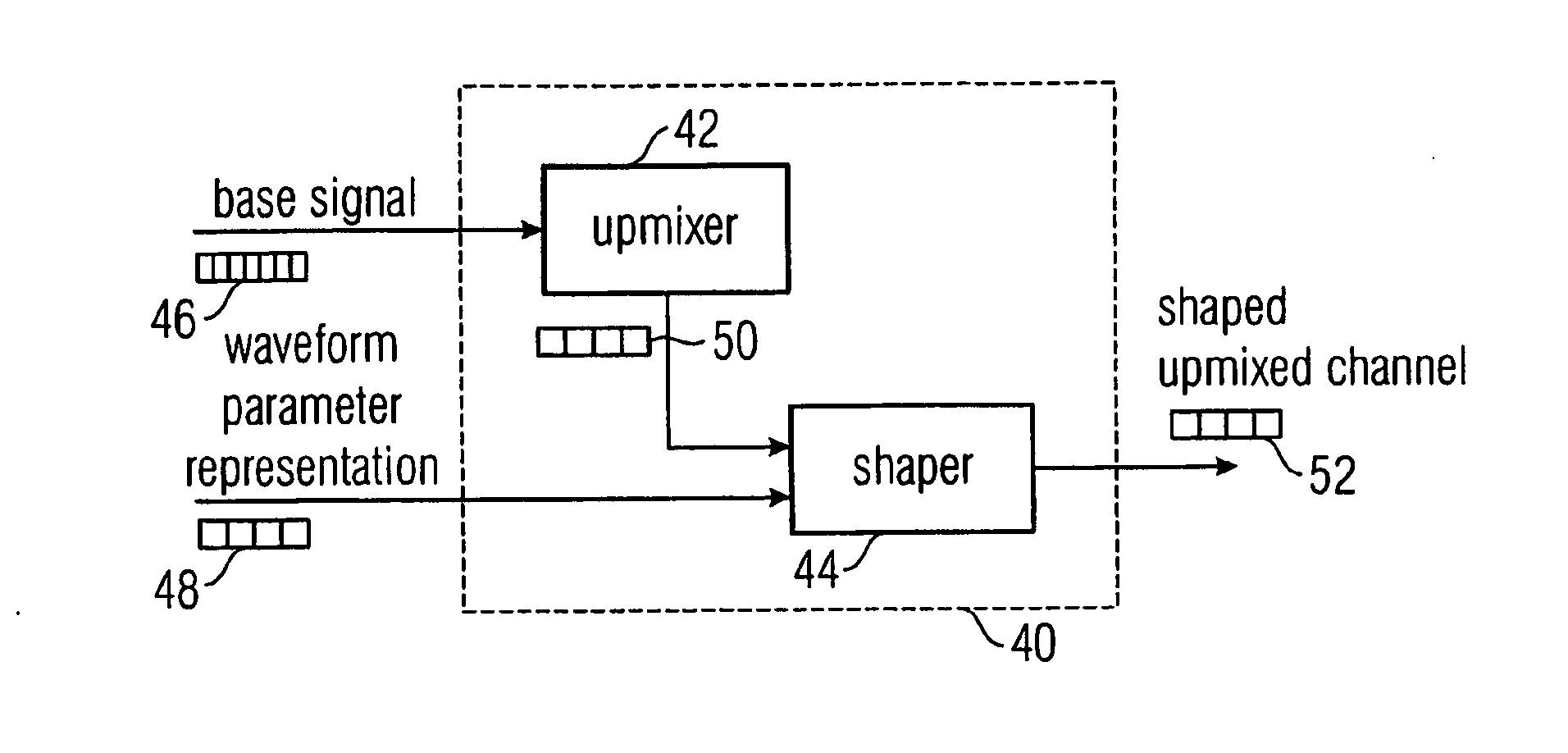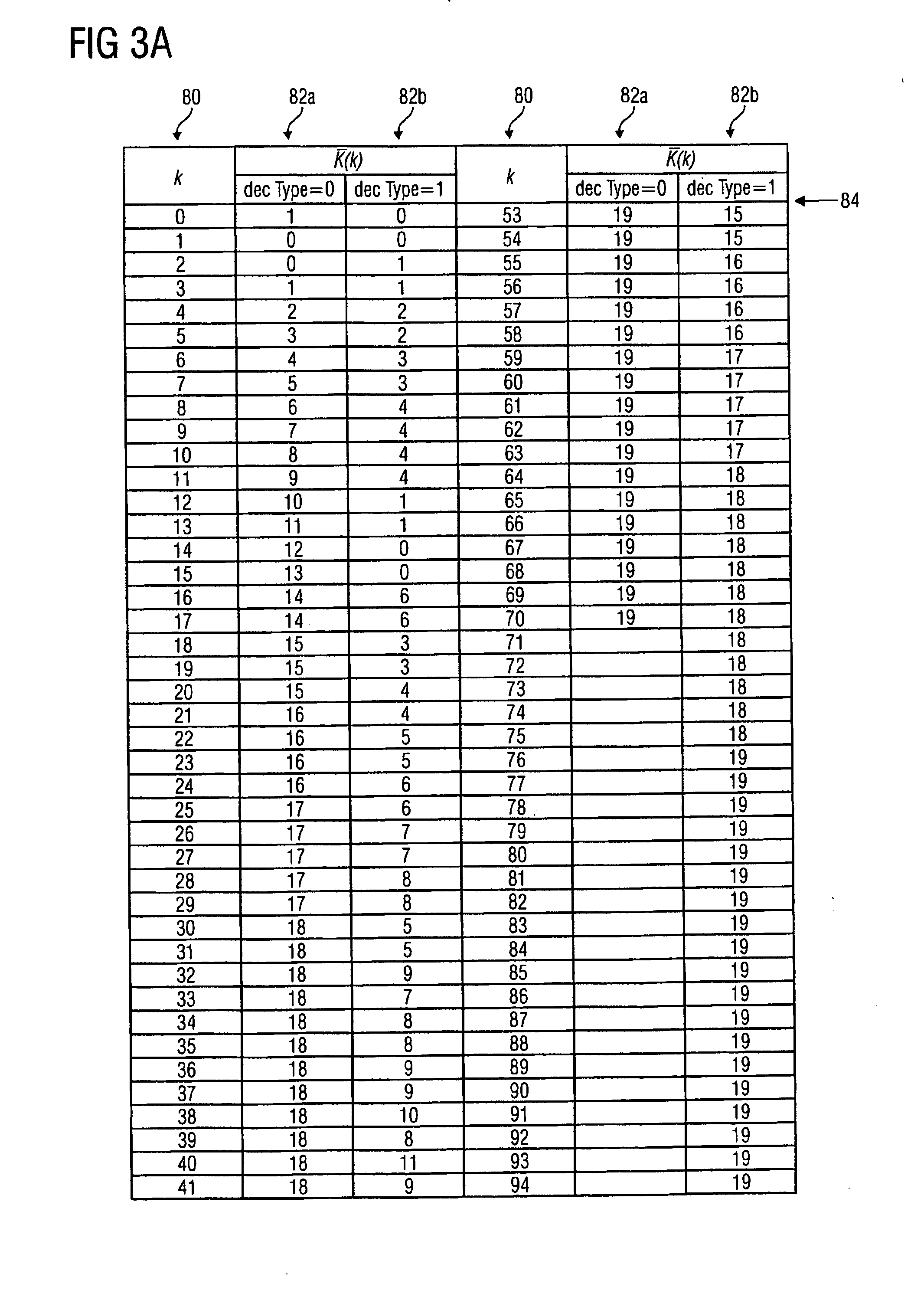Temporal and spatial shaping of multi-channel audio signals
a multi-channel audio and spatial shaping technology, applied in the field of multi-channel audio signal coding, can solve the problems of large room size, unnatural sounding transient signals, diffuse sound generated in the decoder, etc., and achieve the effect of improving the preservation of multi-channel signal spatial distribution
- Summary
- Abstract
- Description
- Claims
- Application Information
AI Technical Summary
Benefits of technology
Problems solved by technology
Method used
Image
Examples
Embodiment Construction
[0085]FIG. 1 shows an inventive decoder 40 having an upmixer 42 and a shaper 44.
[0086] The decoder 40 receives as an input a base signal 46 derived from an original multi-channel signal, the base signal having one or more channels, wherein the number of channels of the base signal is lower than the number of channels of the original multi-channel signal. The decoder 40 receives as second input a wave form parameter representation 48 representing a wave form of a low resolution representation of a selected original channel, wherein the wave form parameter representation 48 is including a sequence of wave form parameters having a time resolution that is lower than the time resolution of a sampling values that are organized in frames, the frames describing the base signal 46. The upmixer 42 is generating an upmix channel 50 from the base signal 46, wherein the upmix 50 is a low-resolution estimated representation of a selected original channel of the original multi-channel signal that...
PUM
 Login to View More
Login to View More Abstract
Description
Claims
Application Information
 Login to View More
Login to View More - R&D
- Intellectual Property
- Life Sciences
- Materials
- Tech Scout
- Unparalleled Data Quality
- Higher Quality Content
- 60% Fewer Hallucinations
Browse by: Latest US Patents, China's latest patents, Technical Efficacy Thesaurus, Application Domain, Technology Topic, Popular Technical Reports.
© 2025 PatSnap. All rights reserved.Legal|Privacy policy|Modern Slavery Act Transparency Statement|Sitemap|About US| Contact US: help@patsnap.com



